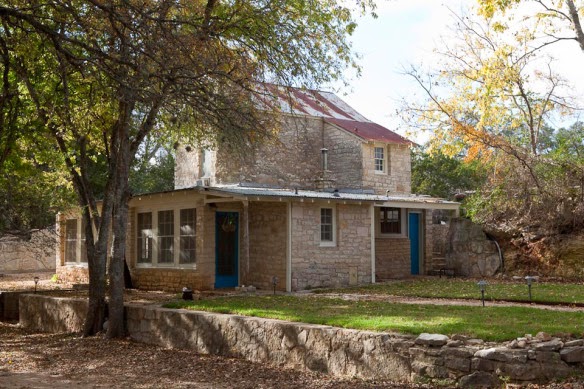Space & Place
Poetry
Reflection
March 2013
The other night I had the pleasure of attending a small dinner and concert at a little bed and breakfast in Dripping Springs. The original house was built in 1857, and the evening began with a brief history of the original owners and how it came to be what it is today. Overall the evening was beautiful. It was small; no more than twenty-five people, with the dining room doubling as the concert space. We ate a salad of local greens and homegrown herbs, homemade sourdough, and a vegetarian lasagna, all of which were just perfect.

The Hatton House, Dripping Springs, TX
Photo from dorrae.wordpress.com
Sitting in the bedroom, listening to the music as Ira drifted off to sleep, I thought about the age of the beams over my head. They were built two years before Darwin published his On the Origin of Species, and four years before the American Civil War. How many people must have walked in and out of these doors, how many times they must have made love in this room, how many meals were eaten and arguments had, tears shed, laughs laughed, memories made.
After reading J.Z. Smith's To Take Place and Michel-Rolph Trouillot's Silencing the Past about a year and half ago, I wrote a poem about my drive through a little Georgia town on the way to see the in-laws. It's not a particularly good poem, but it hits on the themes I want to write about today.
Places become what they are in the midst of a complex social nexus of authority, experience, time, and people. Places are valued based on how and where they are situated in that nexus. A place is not sacred in and of itself; rather, its sacred nature is generated by how we treat it: do we remain silent, genuflect, sing? Do we drink beer and tell stories? Do we remember loved ones? Do meet there to celebrate? How do we place ourselves within the story of a place?

Creek Road in Dripping Springs, TX
As I sat in that old house listening to new music, I was reminded of the urge to feel like I am part of something older, that, since I've stepped foot beneath those beams, I too am a part of the house and its story—but I was a guest, not a family member; an intruder pretending to live a borrowed life. I donned history's cloak for a moment and drank a glass of wine. But the Hatton House become a place for me Saturday night, filling in an empty space on the map along Creek Road. I took a piece of it with me, and my story now includes a crisp evening listening to guitar beneath a 150 year-old ceiling built by German settlers, and I am better for it.